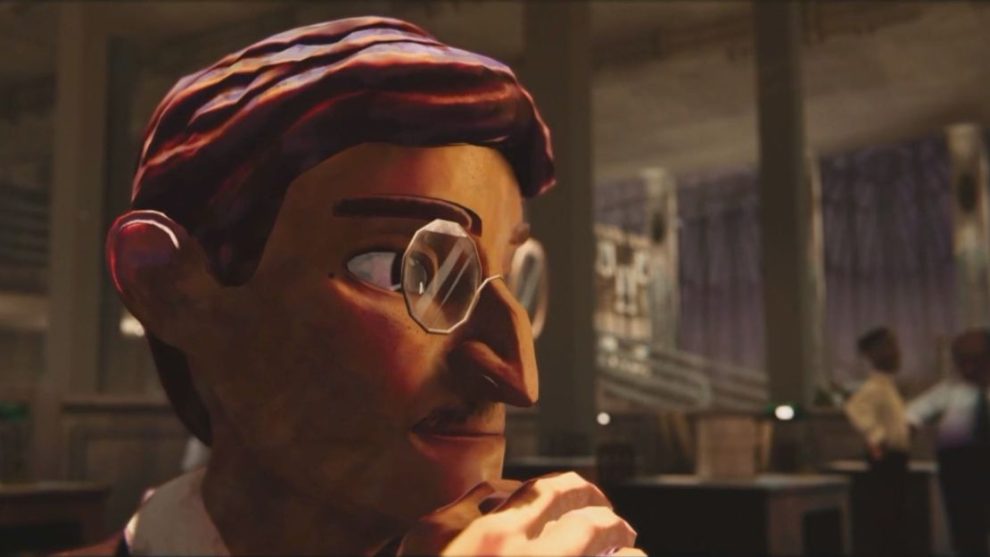( Spanish) – Telling the history of Mexico through interactive experiences is the main mission of Mácula Interactive, an independent Mexican creative studio that will soon release the video game “México, 1921: A Deep Dream.”
This game – developed in collaboration with the UNAM Bibliographic Research Institute and the Museum of Popular Art of Mexico City– will place you in the 1920s in the fictional role of Juan Aguirre, a journalist who will have in his hands the resolution of a case surrounded by mystery in the history of the country: the assassination of President Álvaro Obregón.
Mácula Interactive confirmed to en Español that the video game, which is part of the Developer Accelerator Program from Xbox (which provides financing for independent video game studios), will be released at the end of 2024. To prepare you, here we tell you what it is about.
“Mexico, 1921: A Deep Dream” is a documentary-historical narrative video game. This game will take you on an adventure in which you will find yourself immersed in one of the most relevant passages of the 20th century in Mexico.
Your character in the game will be Juan Aguirre, “a photojournalist who must investigate, interview and photograph people, collect historical objects and report the news that will change the course of the country,” explains Mácula Interactive. That is to say, you will have the mission of investigating, from journalism, who was behind Obregón’s murder.
Álvaro Obregón is one of the most recognized figures of revolutionary and post-revolutionary Mexico, according to official records of the Chamber of Deputies and the National Human Rights Commission (CNDH).
Among other things, he was an ally of Francisco I. Madero prior to his assassination in 1913; He was key to overthrowing the dictatorial government of Victoriano Huerta in 1914; He got into conflicts with Francisco Villa, another extremely relevant character of this time, to the point of defeating him in the battle of Celaya in 1915, in which he lost his right arm; He was the only undefeated general of the Mexican Revolution and served as president of Mexico between 1920 and 1924.
In 1927, says the CNDH, Obregón launched his second presidential candidacy and won the elections for the period 1928-1932. However, on July 17, 1928, the elected president was assassinated in the La Bombilla restaurant, located in the south of Mexico City, where he was celebrating his electoral victory.
The material author of the crime was José de León Toral. He murdered Obregón when he approached to photograph him. For this reason, according to the CNDH, he was sentenced to the death penalty and later shot in Lecumberri prison. The official version indicates that the intellectual author of the murder was the nun Concepción Acevedo, better known as Conchita, sentenced to 20 years in prison for this.

However, the intellectual authorship of Obregón’s assassination has always been in question. The Catholic Church and the government were at a point of high tension at that time due, says the CNDH, to the “anti-clerical” laws of the 1917 Constitution, which from then until today determine that the State is secular, it is That is, it establishes the separation of the Church from the decisions of the country.
“Perhaps Obregón’s re-election in itself did not imply any problem for the Catholic Church, perhaps what worried it was the continuity of the anticlerical policies emanating from the 1917 Constitution,” indicates the CNDH.
Faced with this tension, the researcher Mario Ramirez Rancañowriter of the book “The murder of Álvaro Obregón: the conspiracy and mother Conchita”, points out that there are “too many doubts” in the intellectual authorship, to the point of suspecting that the nun Concepción was used as a scapegoat.
“Did the nun Concepción Acevedo de la Llata really orchestrate the assassination of General Álvaro Obregón, winner of the 1928 presidential elections? In our opinion, there are too many doubts regarding her quality as an intellectual author, and we dare to suspect that she was rather a scapegoat.
“If our reasoning is correct, then who orchestrated it? It is not easy to find a solid and convincing answer. From our point of view, the murder was the result of the holy war mounted by José Mora y del Río, supported by the Episcopate, the National League for the Defense of Religious Freedom, the Union of the Holy Spirit, the famous U, and fueled by the Milanese Achille Ratti. The central objective: its total rejection of several articles of the Political Constitution of 1917,” writes Ramírez Rancaño.
History, meanwhile, has not fully resolved the case of Obregón’s assassination. And that is why Mácula Interactive put the almost 100-year-old doubt at the center of its video game: who planned Obregón’s murder?

“You play as Juan Aguirre in third person. You have to control this character as if he were a journalist,” the general director of Mácula Interactive, Paola Vera, told en Español.
On your historical adventure, you will have several tools to help you advance, including:
- Camera: Juan has to take photographs of his surroundings, of the people he interviews.
- Notebook: This is where Juan takes notes and records all the things he investigates, the people he meets and the objects he finds.
- Nosy mode: “Because he is Mexican and a journalist, he has something that we call the nosy mode, which is this ability to be able to listen to conversations or find certain things that you were not destined to find,” Vera indicated about Juan’s “secret power.” in the video game.
“Together, these mechanics are what we try to give the player to recreate the experience of a journalist in the 1920s,” he added.

In addition to the game dynamics, “Mexico, 1921” portrays spaces and people of the time so that the jump in time is as immersive as possible.
“This documentary video game aims to bring people closer to the history of Mexico through an emotional, interactive and deeply documented experience that allows the generation of an interactive documentary archive about the history of Mexico,” explains Mácula Interactive.
Precisely, according to Vera, that is the reason why Mácula was born: to tell the history of Mexico through video games. This has several challenges, from technical to narrative.
“But I think the main thing has been to be able to find these interesting collaborations that undoubtedly enrich the game, such as the Newspaper Library (of the UNAM) and the Museum of Popular Art, because they help us realize that history and video games coexist very well. So, I think that without a doubt the biggest challenge has been having to decide what not to put in the game,” he added.
An important part of “Mexico, 1921” is that, according to Vera, it is not just a game, but is built to be a complete narrative experience.
“We are giving the player a space for exploration, but at the same time it is guided by a 100% narrative and fictional story, which is the life of Juan Aguirre,” added the general director of Mácula Interactive.
To achieve this narrative experience, Mácula has a team behind him which is responsible for covering as many aspects as possible.
In addition to programmers and animators to cover multiple technical issues, Mácula has a historian to verify what is told and shown; In addition, it has a narrative direction so that the pieces fit together in the best possible way and the story is coherent.
The above results in a fluid narrative in the video game, but also the creation of detailed scenarios set in the 1920s.
Among the environments that we can find in “Mexico, 1921” are the Zócalo of Mexico City, the headquarters of the Secretariat of Public Education (SEP) –created during the mandate of Álvaro Obregón–, the Popocatépetl volcano and the asylum of La Castaneda.


There are also sound environments from the period to improve immersion in the game, which was possible thanks to historical research by the Music Scoring Company studio, the National Sound Library and Mácula Interactive.
“What were those proclamations that were heard in the past? Although we know the sounds of the sharpener or the (buyer of) old iron, those cries have always existed, they just change.
“The organ grinder, for example, is one of the sounds that we believe is super representative of the city. And already in 1921 it was thought that it was going to disappear. So it is one of those sounds that we do seek to portray in the game,” Vera explained.





![[Img #74676]](https://thelatestnews.world/wp-content/uploads/2024/12/Laser-artificial-neuron-150x150.jpg)









Add Comment